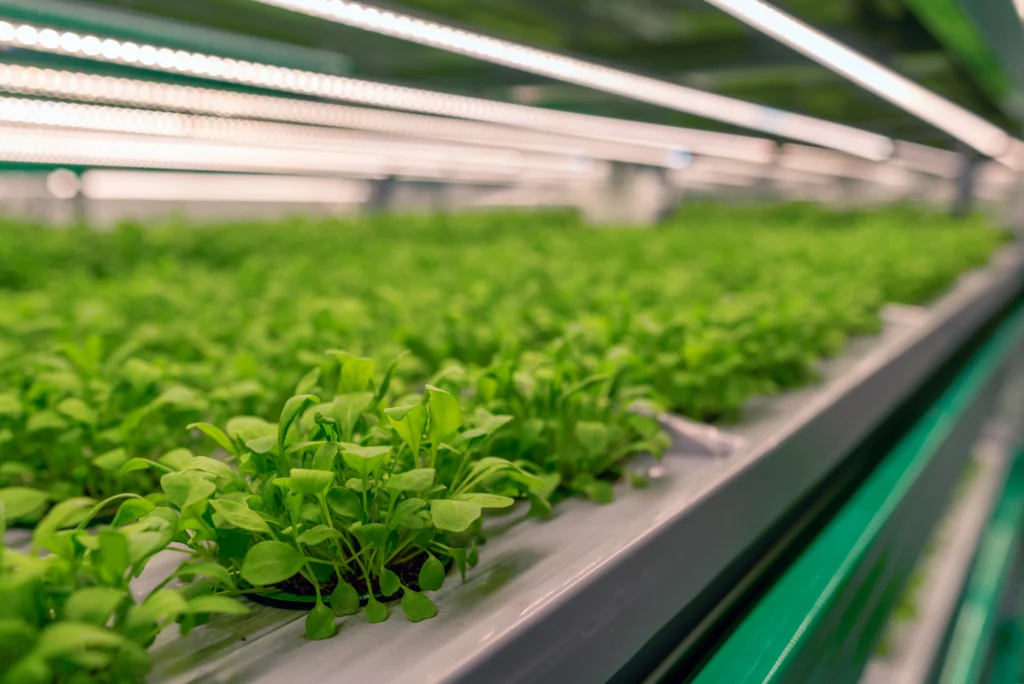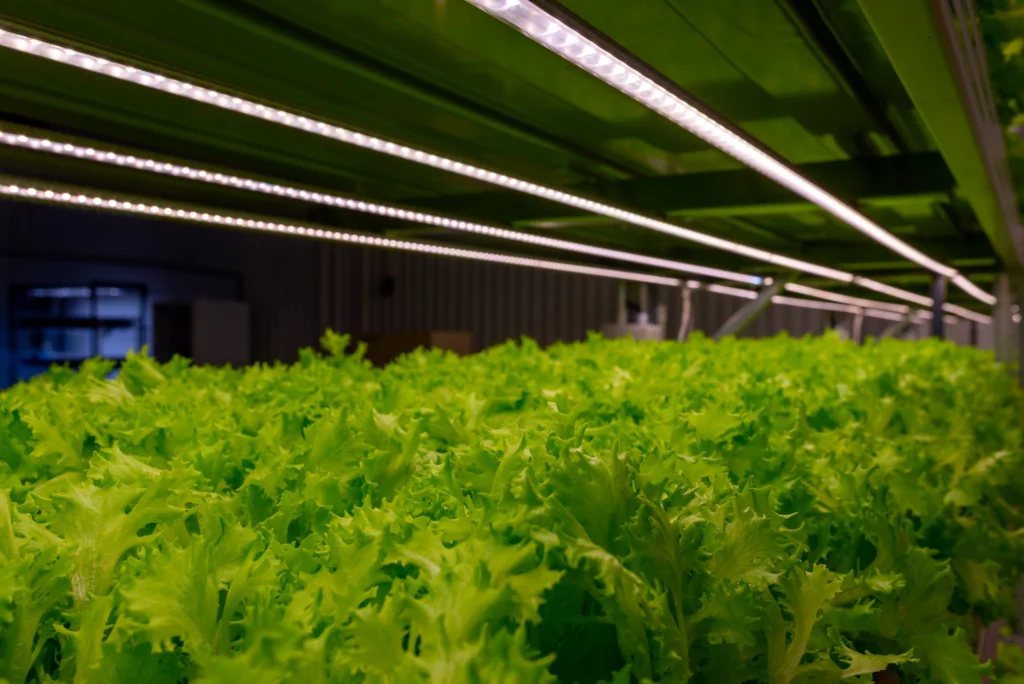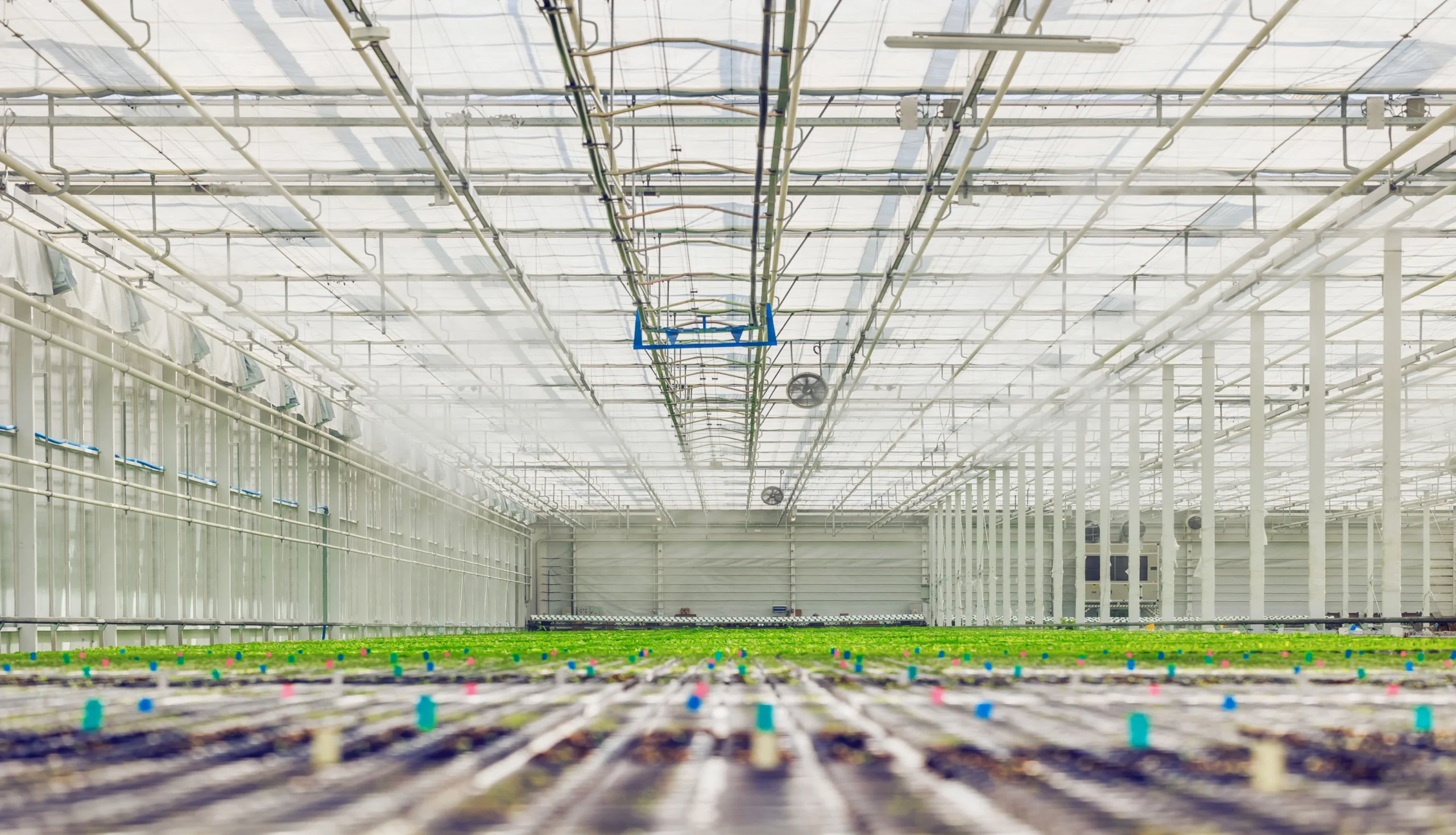Growing crops under controlled conditions is gaining popularity, especially in the context of the growing challenges of global warming, urbanization and the need to increase agricultural productivity. The two main systems that currently dominate the field are greenhouse cultivation and vertical farms. What are the differences between the two and which system is more effective? Let’s take a closer look at these two solutions.

Greenhouses – a traditional but effective system
Greenhouses have been used for centuries and are still widely used around the world. Their popularity is due to several key advantages:
- Access to natural sunlight: Greenhouses allow plants to benefit from natural sunlight, which is not only free but also best suited for photosynthesis. This allows plants to grow in a more natural way, which can translate into a higher quality crop.
- High productivity: greenhouses can be very productive, especially in regions with favorable climates. By using natural light and heat, energy costs are lower compared to vertical farms, which often require artificial lighting and climate control.
- Scalability: Greenhouses can be built on a variety of scales, from small home greenhouses to huge industrial complexes. This gives flexibility to adapt production to market needs.
Vertical farms – a modern solution for urban areas
Vertical farms are a relatively new solution that is gaining popularity, especially in urban areas where space is limited. The characteristics of vertical farms are:
- Utilizing vertical space: Vertical farms allow plants to be grown at multiple levels, maximizing the use of available space. This is especially beneficial in cities where the price of land is high.
- Control of environmental conditions: In vertical farms, full control over environmental conditions such as temperature, humidity, CO2 levels and lighting is possible. This allows you to optimize plant growth conditions throughout the year, regardless of external conditions.
- Proximity to the consumer: Vertical farms can be placed close to urban centers, reducing transportation time and CO2 emissions associated with food transportation. Fresh products can reach store shelves faster, improving their quality and shelf life.
Performance and efficiency comparison

Greenhouses:
- Lower energy costs: By using natural sunlight, greenhouses have lower energy costs compared to vertical farms that must rely on artificial lighting.
- Higher quality light: Natural sunlight is more varied and intense than artificial light, which can translate into better plant development and higher quality yields.
- Seasonality of production: Greenhouses are more dependent on weather conditions, which can affect the seasonality of production. In regions with less favorable climates, additional heating and lighting may be necessary.
Vertical farms:
- Increased production per unit area: By taking advantage of vertical space, vertical farms can produce more plants in a smaller area, which is crucial in urban areas.
- Year-round production: vertical farms allow continuous production throughout the year, regardless of the season. Full control over growth conditions eliminates the impact of changing weather conditions.
- Higher energy costs: The intensive use of artificial lighting and climate control systems generates higher energy costs compared to traditional greenhouses.
Naturalness vs. technology
Greenhouses offer a more natural growing process due to access to sunlight and natural climatic conditions. This can translate into higher crop quality and lower environmental impact, especially in terms of energy consumption. Vertical farms, on the other hand, use cutting-edge technology to ensure optimal growing conditions throughout the year, allowing for increased efficiency, but at the cost of higher energy inputs.

Summary
The choice between growing in greenhouses and vertical farms depends on many factors, including location, space availability, energy costs and specific market needs. Greenhouses offer a more natural growing process with lower energy costs, which is beneficial in regions with suitable climates. Vertical farms, on the other hand, despite higher energy costs, offer greater efficiency per unit area and the possibility of year-round production, which is ideal for urban areas.
Both systems have their unique advantages and disadvantages, and their effectiveness depends on specific conditions and production goals. As technology develops, we can expect further optimization of both systems, allowing for more sustainable and efficient agriculture in the future.

Leave a Reply